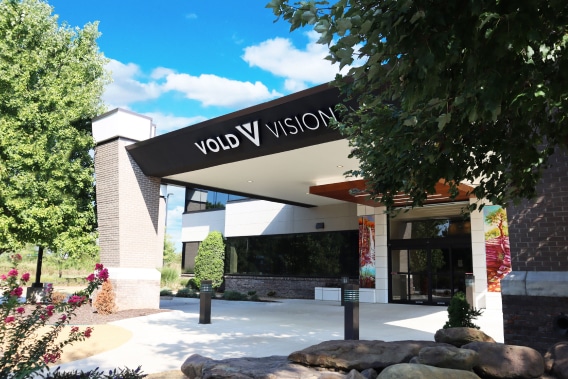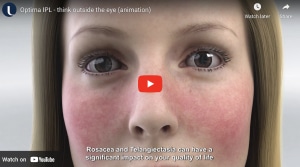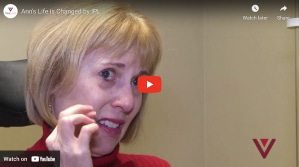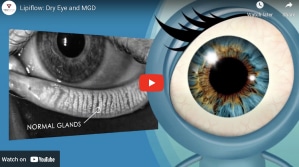Dry Eye
Dry eye is widespread, and an estimated 4.88 million people suffer from the condition in the United States. Dry eye occurs when the tear film, or the protective layer of moisture on the eye’s surface, is disrupted. Disruption may be caused by a lack of tears, a lack of oil in the tear film, inflammation, or (more commonly) all of the above. Other possible abnormalities of the eye surface can also contribute to dry eye.
Dry eye ranges in severity, with the more severe form of dry eye called ocular surface disease. Once dry eye is classified as ocular surface disease, the condition is chronic, and there is usually some form of continual inflammation or breakdown of the eye’s surface.
Discover our patient success stories.
*Individual results may vary.
What is Dry Eye?
In a healthy eye, the cornea is protected and lubricated with “basal” tears. These tears flow gently across the cornea every time you blink, providing nourishment and overall protection from the environment. With dry eyes, tears are either inadequate or of poor quality, which can compromise the eye’s health and vision.
Other medical conditions may exacerbate dry eye and ocular surface disease. These can include thyroid or autoimmune disorders, chronic inflammation, dysfunction of the eyelid glands, or meibomian gland disease.
Certain medications can also contribute to dry eye, including diuretics. In addition, environmental factors such as a dry environment, air conditioning, fans, heaters, and wind may contribute to daily dryness.
Besides general discomfort, those who suffer from dry eye can experience itchy and red eyes, blurred vision, or the sensation of something being in their eye. When we evaluate patients for dry eye at Vold Vision, our expert eye surgeons assess each patient’s eyes and tears to determine factors such as:
- The volume of tears produced and how often
- The quality of the tears
- How long the tears maintain a healthy surface on the eye before evaporating
- How often blinking occurs
- If there are associated or underlying issues or medications that are contributing to the dry eye
How Does Dry Eye Treatment Work?
At Vold Vision, we provide the best technology for treating and diagnosing dry eye and ocular surface disease. Following our detailed evaluation of your eyes, our treatment strategy is carefully tailored to the individual patient’s needs and desires.
Possible treatments include:
- Punctal occlusion
- Artificial tears, with components tailored to individual needs
- Moisturizing or hypertonic ointments
- Anti-inflammatory eye medications
- Warm compresses and heated eye masks
- Nighttime eye masks to avoid evaporation
- Avenova anti-inflammatory eyelid spray
- Tea tree oil
- LipiFlow® thermal pulsation therapy for eyelid disease
- Intense Pulsed Light therapy for meibomian gland and eyelid inflammatory disease
- Specialty compounded eye drops
- Medications by mouth
- Amniotic membrane treatments
- Specialty contact lenses with a liquid reservoir
LipiFlow®
LipiFlow® is a thermal pulsation therapy for eyelid gland disease. As part of your dry eye evaluation, we will examine the eyelid glands responsible for producing the oil in the tear film and keeping high-quality tears on the eye surface. Tears evaporate quickly without this oil, and the sensation of dryness and irritation persists.
LipiFlow® is a 15-minute treatment that heats and massages the eyelids, expressing the glands to allow the free flow of oil into the tear film. Most patients will experience a noticeable improvement in dry eye symptoms.
The primary goal of this treatment is to break the cycle of eyelid gland occlusion and prevent further atrophy and dysfunction of glands over time. The spa-like experience is comfortable and enjoyable, and patients can return to normal activities immediately afterward.
IPL (Intense Pulsed Light)
IPL, or Intense Pulsed Light, is a focused laser treatment for dry eye. The laser targets blood vessels in the lower eyelid, which carry inflammation to the glands and cause eyelid gland dysfunction. Without properly functioning eyelid glands, tear quality is poor. The sensation of IPL treatment is minimal — if anything, the patient may feel a light rubber band-like snap on the cheek.
After this treatment, patients can expect an improvement in dry eye symptoms. This laser is also used for cosmetic skin treatments, so patients will notice improved cheek skin tone and texture as an added benefit. IPL treatment is performed in a series of four sessions that are approximately ten minutes each. Patients may be able to reduce or discontinue the use of some other dry eye treatments after IPL, although individual results may vary.
Prokera®
Our practice offers patients Prokera®, a biologic corneal bandage to treat chronic dry eye and other diseases such as keratitis, recurrent corneal erosion, and chemical burns. Prokera® can also be used for specific indications related to refractive surgery.
This unique treatment uses cryopreserved amniotic membrane tissue, which has natural therapeutic qualities that help the eye heal faster with less pain, scarring, and inflammation. Prokera® is ideal for patients with chronic dry eye and can rejuvenate the cornea in as few as three days, with benefits lasting up to five months or longer. Prokera® is easily inserted and removed in our office.
How Long is the Recovery after Dry Eye Treatment?
The length of recovery after dry eye treatment at Vold Vision will depend on the type of treatment recommended for your unique eye condition. Many dry eye treatments can be performed at home and require no downtime, while others may require minimal time to recover.
Who is a Candidate for Dry Eye Treatment?
A trained ophthalmologist must conduct adequate testing to determine whether you are a candidate for treatment and what treatment option is best for you. Diagnosing and treating dry eye can be quite subtle and requires a high level of education and engagement from your eye care provider. At Vold Vision, we are happy to provide the latest diagnostic technology for dry eye and ocular surface disease, as well as comprehensive management strategies.
Learn More About Dry Eye Treatment
Why Should I Go to Vold Vision for Dry Eye Treatment?
The board-certified eye surgeons at Vold Vision treat dry eye using advanced diagnostics to help reduce symptoms and prevent ocular surface disease from progressing. We have developed a comprehensive testing strategy that evaluates all aspects of dry eye, including lack of tears, inflammation, and oil production of the eyelid glands.
We analyze the eyelid gland structure in all dry eye patients with LipiScan® technology and carefully evaluate the oil quality under the microscope.

We measure the tear production of your eye and the water component of the tears to determine if underproduction is the problem and measure for inflammatory markers to see if any inflammation needs to be addressed. By scanning your eye with the HD Analyzer, we also analyze the degree of visual disability associated with dry eye.
By taking these steps during the evaluation and gaining a thorough understanding of the patient’s eye condition, we are able to provide the highest-quality results from personalized dry eye treatment.
Take the Next Step
To learn more about dry eye, schedule a consultation with one of the providers at Vold Vision. Throughout your entire eye care journey, you will have your very own Vold liaison to assist you with any questions you have. Our patient care counselors are available by text, phone, or email and no question is too small for them to answer. To schedule a consultation, fill out the consultation request form below, or call or text (479) 442-8653.




